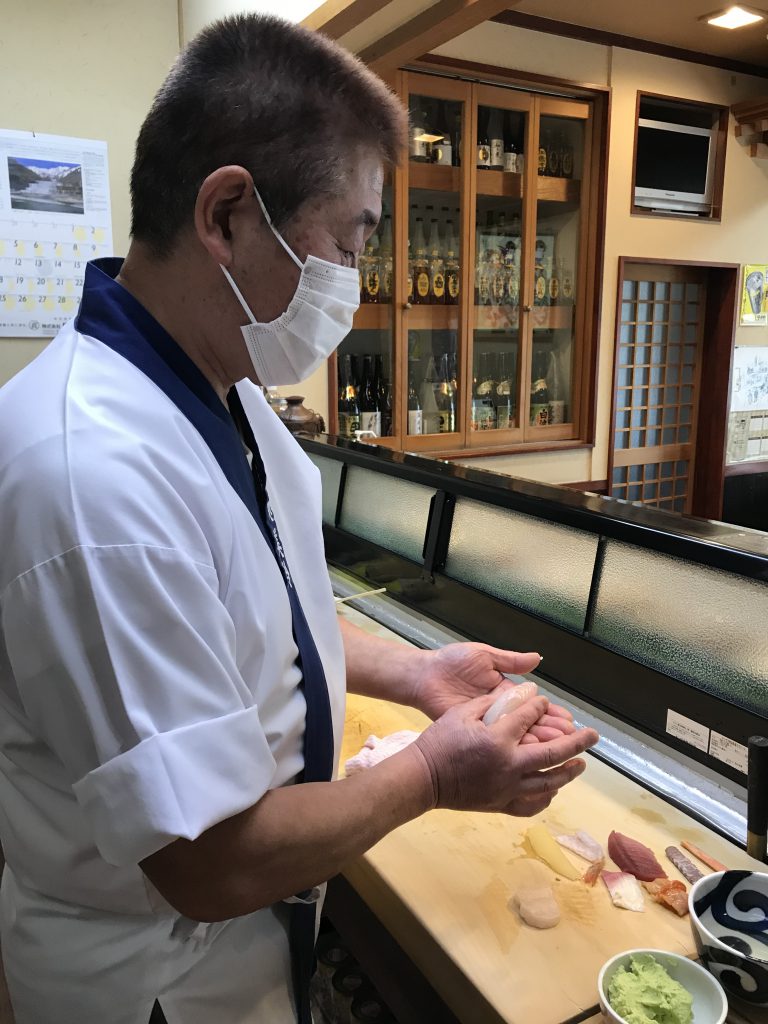From Paddy to Plate – Mutsunishiki Part 2

While some foods become trends that disappear as fast as they appear, sushi’s popularity has stood the test of time. The popularity and love for the dish across the globe is something that can’t be denied. These days, no matter where you go in Australia there’s somewhere you can buy sushi. That popularity has led to the creation of countless new types of sushi outside of Japan, like California Rolls, and the experimental stuff you find at the sushi stalls you find at your local Woolies. That kind of sushi isn’t bad. Sometimes it’s just what you want. However, the delicacy and precision of traditional sushi, especially when done well, provides a culinary experience that’s hard to beat.
Welcome to part two of our series about Kuroishi’s Mutsunishiki rice. In this part we’ll be diving into the world of sushi and putting Mutsunishiki to the test, finding out whether or not a premium sushi rice actually makes a difference. (For readers who missed the first part of this series, Kuroishi is a small city in Aomori Prefecture, the northernmost Prefecture of Japan’s main island of Honshu).
In Japan, sushi is available everywhere. Convenience stores and supermarkets offer selections of nigirizushi (a small portion of sushi rice topped with a thinly sliced topping) and makizushi (rice and a filling wrapped in seaweed. This is probably a style that’s much more familiar to you). Conveyor belt sushi chains are aplenty and there are also small sushi restaurants of differing price and quality no matter where you look. Today, we’ll be going to Misuzu, one of Kuroishi’s best spots to grab some high quality sushi.
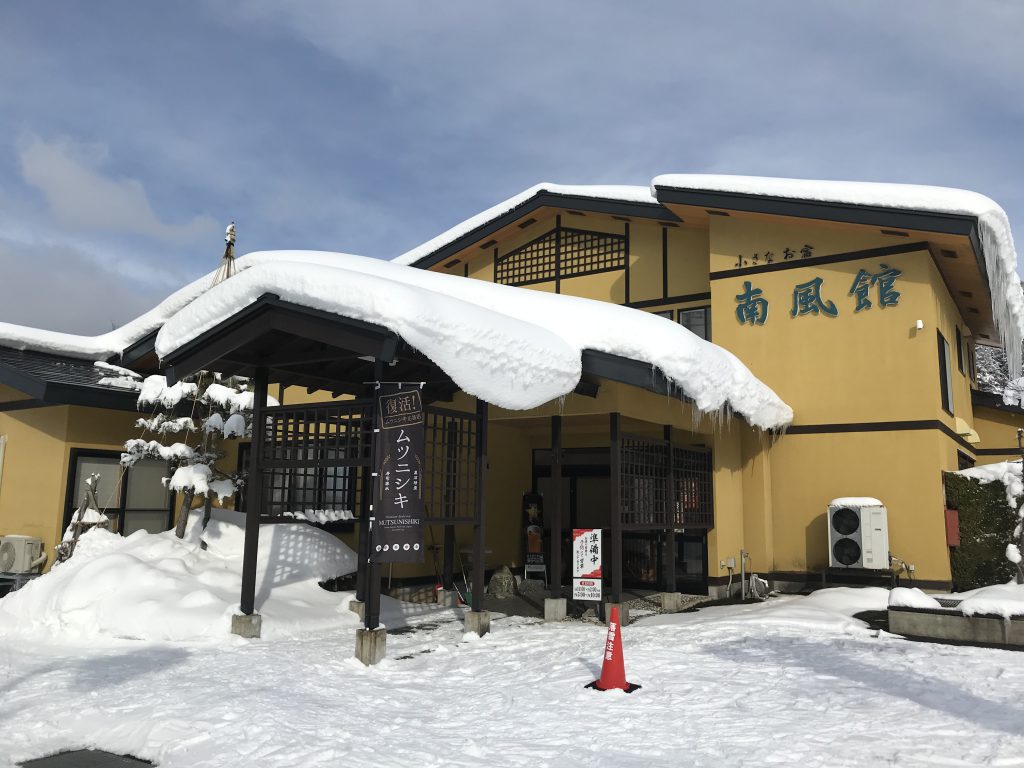
Misuzu is located in Kuroishi’s hot spring area, approximately 20 minutes from the city centre. Misuzu is part of a hot spring lodging called Nanpuukan. Outside, we were greeted by the building’s charming, quaint appearance and a banner about Mutsunishiki rice out the front. Once inside, we were guided to the restaurant, where we were asked whether we want a table or to sit at the counter. We choose the counter for the most immersive experience possible.
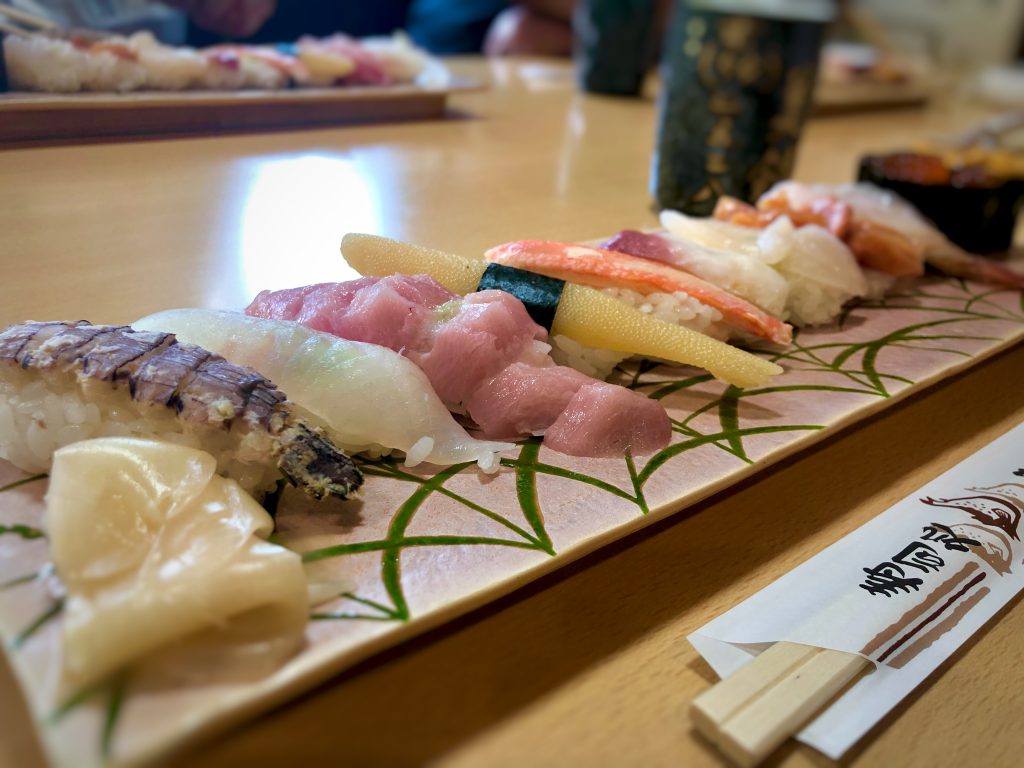
Let’s talk toppings. Traditional sushi toppings in Japan consist of things that you’re probably familiar with, along with some likely unfamiliar offerings. Fresh cuts of fish like tuna are commonly available both in Australia and Japan. While the use of fish eggs in sushi is not uncommon in either Japan or Australia, their usage, preparation and variety are quite different. I do seem to recall that sushi rolls, rolled in fish eggs being pretty common. That’s definitely more of a western style.

One common presentation of fish egg sushi in Japan is in roll form, like shown in the image above. That piece is topped with ikura (salmon roe), something you’d find at a lot of sushi spots outside of Japan.
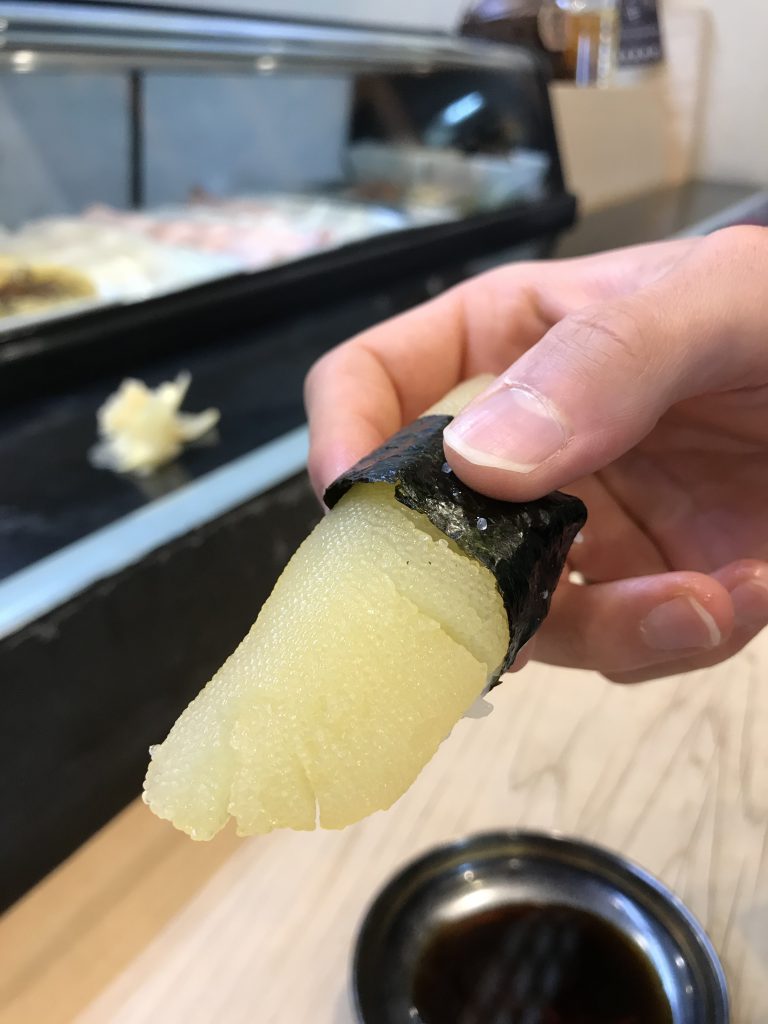
A preparation of fish eggs a little more unique to Japan can be seen in the yellow piece above. The yellow piece above is “kazunoko”, a type of prepared herring roe. Kazunoko is traditionally eaten at New Year’s in Japan and has a slightly salty taste to it. Other less common toppings in Australia are things such as sea urchin, shellfish and shako (Japanese Mantis Shrimp). Sea urchin has a rather delicate, sweet flavour and a soft, almost creamy texture. Shellfish has a mildly sweet, ocean flavour and a firmer, meatier texture than raw fish. Shako has a sweetness akin to that of fresh prawns, but it has a milder flavour overall.
The traditional way to eat sushi may come as a surprise to some. Chopsticks are what one would assume to be the common approach, or at least I thought so anyway. However, sushi is traditionally intended to be eaten by hand in one bite. That being said, using chopsticks is perfectly fine in most places nowadays. These days, it’s not uncommon for Japanese people to use chopsticks to eat sushi, and it’s even how many prefer to eat their sushi! Just make sure you don’t disassemble your sushi. Even though you may want to appreciate each ingredient separately, separating the ingredients is considered disrespectful.
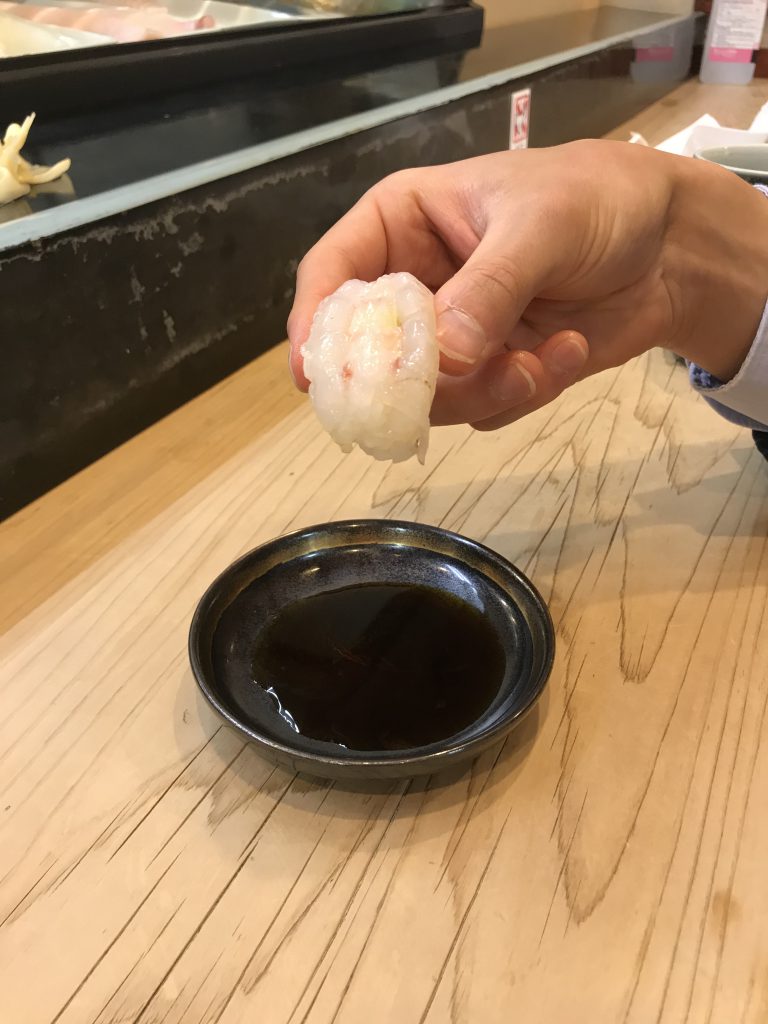
Even though you may want to appreciate each ingredient separately, separating the ingredients is considered disrespectful.
When it comes to eating the gunkan maki (seaweed wrapped around rice and a topping, translates to battleship sushi), the traditional method requires the help of gari (sushi ginger). Ginger is dipped into soy sauce and then used to brush soy sauce onto the topping of the gunkan maki. We were however told that many people find this to a bit of a nuisance, so it’s not really that important if you can’t be bothered.

I’ve eaten plenty of sushi, all across the world. Some delicious and some, well, subpar to say the least. The sushi at Misuzu is easily some of the best I’ve ever had. Expert preparation is certainly one reason for that, but the quality of ingredients used is also a big contributing factor. When I consider my good and bad sushi experiences, the rice is usually the determining factor. As mentioned in part one, there are a whole lot of different rice varieties out there, all of which have their own characteristics. Different rices contain different levels of starches, resulting in rather varying levels of stickiness, texture, and flavour among other things when cooked. Basmati rice, for example, probably isn’t going to make a rich, creamy risotto. Sometimes, rice type matters. It’s the same for sushi.
With the rice being so much more of a subtle base that provides a foundation for everything, it’s much easier to get a passable topping than it is rice. I’ve had sushi where the whole thing just crumbles apart as soon as you pick it up, and I’ve had others where the flavours just didn’t stick to the rice particularly well. Among Japanese short grain rice, Mutsunishiki rice really does live up its claim to the term sushi rice. It provides arguably the perfect platform to enjoy the different sushi toppings. The rice’s flavour was subtle, and blended seamlessly with all of the toppings. Compared to other sushi rices I’ve tasted, the seasoning of the sushi rice was much more ingrained into the rice (pun intended), almost as if the rice and seasonings were never separate in the first place. It was firm enough for each grain to be distinguished, but still quite tender. The level of stickiness is perfect for sushi. Although not as sticky as glutinous rice, it doesn’t fall apart as soon as you grab it, which is important. Nothing is more disappointing and annoying than your sushi tragically falling apart right in front of your eyes. It’s its subtle qualities and overall gentleness that really bridge that gap between good and great sushi. Well, at least for me anyway.
